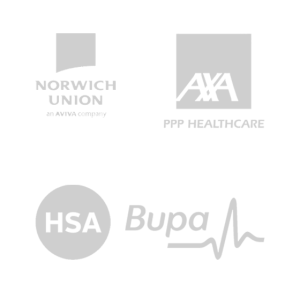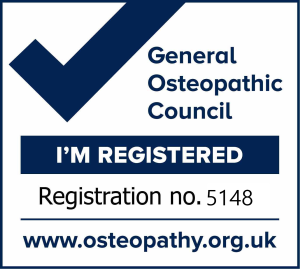What is Osteopathy?
- Osteopathy recognises that much of the pain and disability we suffer stems from abnormalities in our body’s structure and function.
- Osteopaths diagnose and treat problems with muscles, ligaments, nerves and joints to help the body’s natural healing ability.
- Treatment involves gentle, manual techniques – easing pain, reducing swelling and improving mobility. Often, this involves manipulation which can result in an audible ‘crack’ which is simply the sound of gas bubbles popping in the fluid of the joints.
- Osteopathy does not involve the use of drugs or surgery.
Treatment
Treatment is aimed at improving mobility and reducing inflammation by using gentle, manual osteopathic techniques on joints, muscles and ligaments. You will be given positive advice related to your lifestyle about how you use your body.
Age is no barrier to osteopathy since each patient is considered individually and treatment is gentle. You may also be given advice about your diet, which in some people may be a factor in their arthritis. Exercises to do at home may also be prescribed to improve joint function and to reduce muscle spasm. Exercise in warm water or salt baths may also be recommended.
Osteopathy is not a cure-all and there are situations when surgery may be necessary – such as a hip replacement – when you will be referred to a specialist via your GP. However, osteopathy can help manage your pain until surgical intervention is necessary, and it can also help with your rehabilitation post surgery.
Osteopathy and Pain Relief
One of the main purposes of osteopathy is pain relief. Osteopathy helps people of all ages who suffer from pain, tackling complaints ranging from sports and work-related injuries to arthritis and sciatica. The osteopath’s role is to alleviate pain and improve the patient’s mobility in order to make life more comfortable.
What is pain?
Pain is your body’s way of telling you that something is wrong. It is often caused by swelling of tissue, which creates pressure on nerves and leads to discomfort. Pain is a useful mechanism to alert you to a problem, and stops you from damaging your body further. It should always, therefore, be taken seriously.
Pain can affect many areas of the body, but particularly the lower back, head, neck, joints and legs. It can result from injuries and arthritis, and can also manifest itself in the form of rheumatic pain and period pain.
Osteopathy and the treatment of pain
Osteopaths can diagnose the cause of pain and help to ease it by reducing tissue inflammation. Treatment methods range from massage of muscles and connective tissues to manipulation and stretching of joints. This helps to reduce muscle spasm, to increase mobility and to create a healthier state in which damaged tissues can heal.
Much long-term, recurrent pain is caused by degenerative changes to the body’s framework. Nobody can reverse this process of ageing, but osteopathic treatment may still ease pain.
Pain control is an important part of treatment and osteopaths give guidance on simple self-help methods to use at home.
The skilled techniques of osteopathy can often allow you a speedy return to normal activity. If you have had a pain for a long time, and other forms of treatment have not helped, osteopathic treatment can be beneficial, although it may require time and patience.
Key points to remember
- Osteopaths are skilled health care professionals.
- Osteopaths deal with pain every day.
- Osteopaths treat six million people suffering from pain each year.
- Osteopaths can help you with treatment and advice on self help.
- Osteopaths treat acute and chronic pain.
- Osteopaths can help prevent pain from recurring
The scourge of back pain
- Lower back pain now affects two-thirds of the adult population of the UK; it is the nation’s leading cause of disability.
- Four out of five people will suffer back pain lasting more than a day at some point in their lives.
- Over £480 million a year is spent on services used by sufferers of back pain, including 14 million GP consultations, seven million therapy sessions and 800,000 hospital beds.
- Back pain is very common in children. Around 50% of children in Europe experience back pain at some time.
- Back problems and repetitive strain injuries cost British industry £5 billion each year.
- Doctors write 55 million prescriptions for painkillers each year.
A Brief History of Osteopathy
Osteopathy was founded in America in 1874 by Dr Andrew Taylor Still of Kirksville, Missouri. Dr Still was a doctor in a small frontier town in the mid-west. Life for a country doctor in those days was very different from what it is today. There were no pain-killing drugs, X-rays or other hospital tests. The local apothecary or chemist, if there was one, sold little more than remedies based on herbs and folklore, for modern pharmacology was as much in its infancy as medicine. The germ theory of disease put forward by Lister and Pasteur was still unheard of, so even if patients undergoing surgery survived the terrible ordeal of an operation without anaesthetic, they often died from an infection soon afterwards.
Medical training was in no better state. There were few medical schools and those that existed were very expensive, so there was little opportunity for anyone wishing to enter the medical profession. Dr Still was fortunate. As the son of a doctor, he went to medical school and received a formal training. After finishing this, he worked with his father.
Doing the rounds of his rural practice he particularly noticed the way his patients’ health was affected by the way they used their bodies. As time went on he followed a different path from many of his peers avoiding alcohol and administering crude drugs which were at their disposal in heroic quantities. This drove him to seek new methods of treatment. The outcome of his research was application of physical treatment as a specialised form of treatment for which he coined the term ‘Osteopathy’.
In 1892 Dr Still organised a school in Kirksville, Missouri, for the teaching of osteopathy and it was from these small beginnings that osteopathy was brought to the United Kingdom around the turn of the century. The first school of osteopathy was set up in London in 1917 and, over time, other schools and colleges followed.

